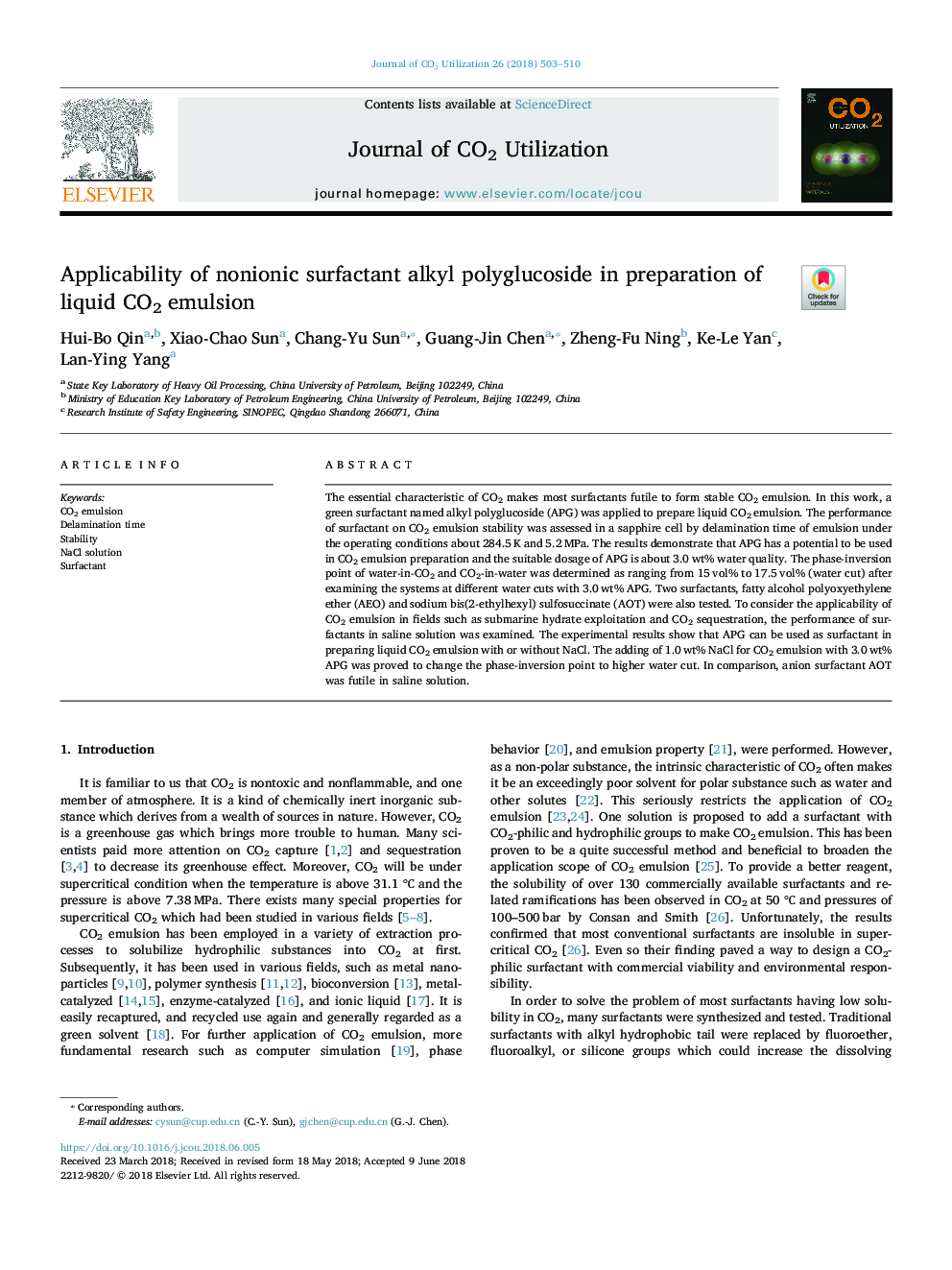| Article ID | Journal | Published Year | Pages | File Type |
|---|---|---|---|---|
| 6528527 | Journal of CO2 Utilization | 2018 | 8 Pages |
Abstract
The essential characteristic of CO2 makes most surfactants futile to form stable CO2 emulsion. In this work, a green surfactant named alkyl polyglucoside (APG) was applied to prepare liquid CO2 emulsion. The performance of surfactant on CO2 emulsion stability was assessed in a sapphire cell by delamination time of emulsion under the operating conditions about 284.5â¯K and 5.2â¯MPa. The results demonstrate that APG has a potential to be used in CO2 emulsion preparation and the suitable dosage of APG is about 3.0â¯wt% water quality. The phase-inversion point of water-in-CO2 and CO2-in-water was determined as ranging from 15â¯vol% to 17.5â¯vol% (water cut) after examining the systems at different water cuts with 3.0â¯wt% APG. Two surfactants, fatty alcohol polyoxyethylene ether (AEO) and sodium bis(2-ethylhexyl) sulfosuccinate (AOT) were also tested. To consider the applicability of CO2 emulsion in fields such as submarine hydrate exploitation and CO2 sequestration, the performance of surfactants in saline solution was examined. The experimental results show that APG can be used as surfactant in preparing liquid CO2 emulsion with or without NaCl. The adding of 1.0â¯wt% NaCl for CO2 emulsion with 3.0â¯wt% APG was proved to change the phase-inversion point to higher water cut. In comparison, anion surfactant AOT was futile in saline solution.
Keywords
Related Topics
Physical Sciences and Engineering
Chemical Engineering
Catalysis
Authors
Hui-Bo Qin, Xiao-Chao Sun, Chang-Yu Sun, Guang-Jin Chen, Zheng-Fu Ning, Ke-Le Yan, Lan-Ying Yang,
